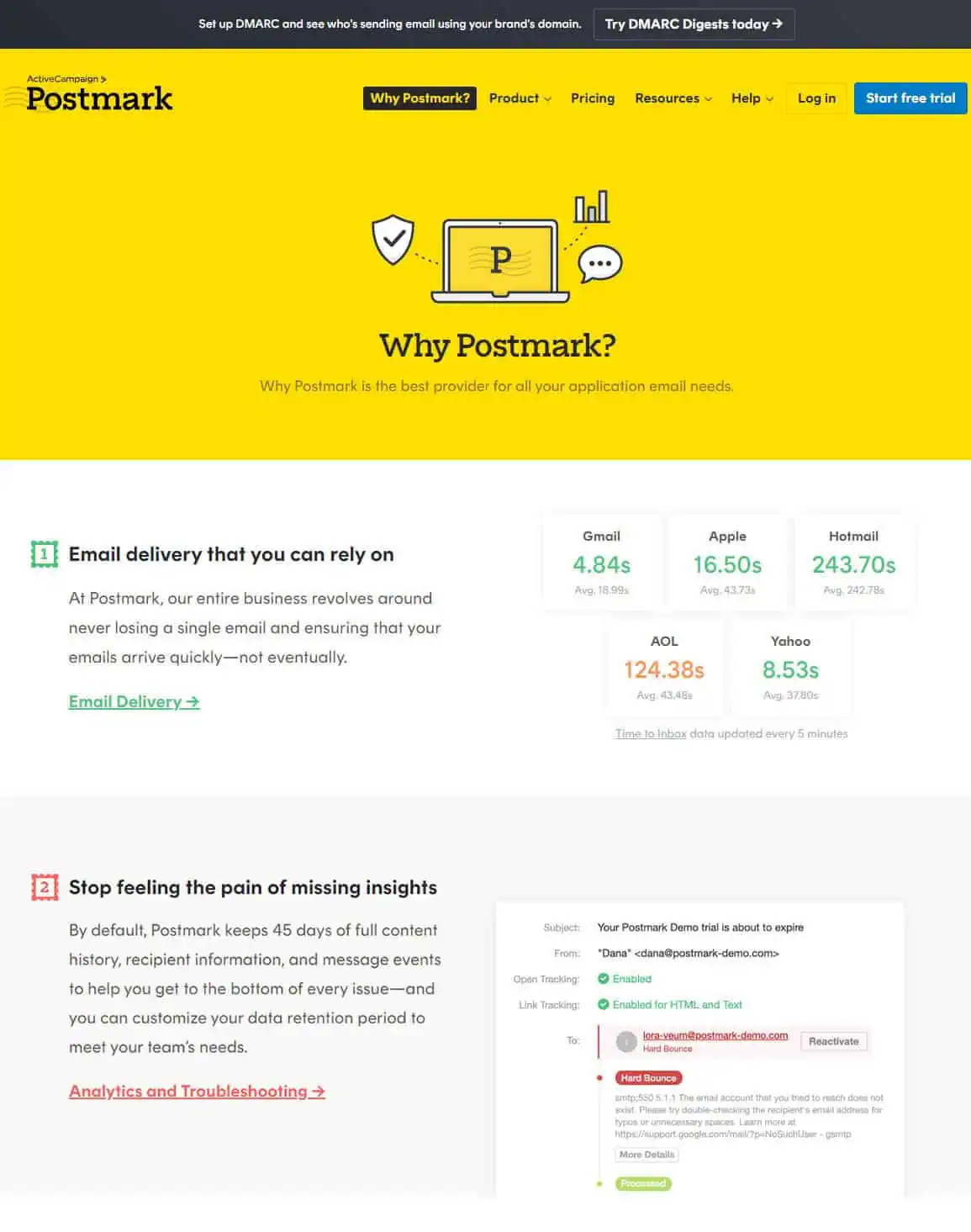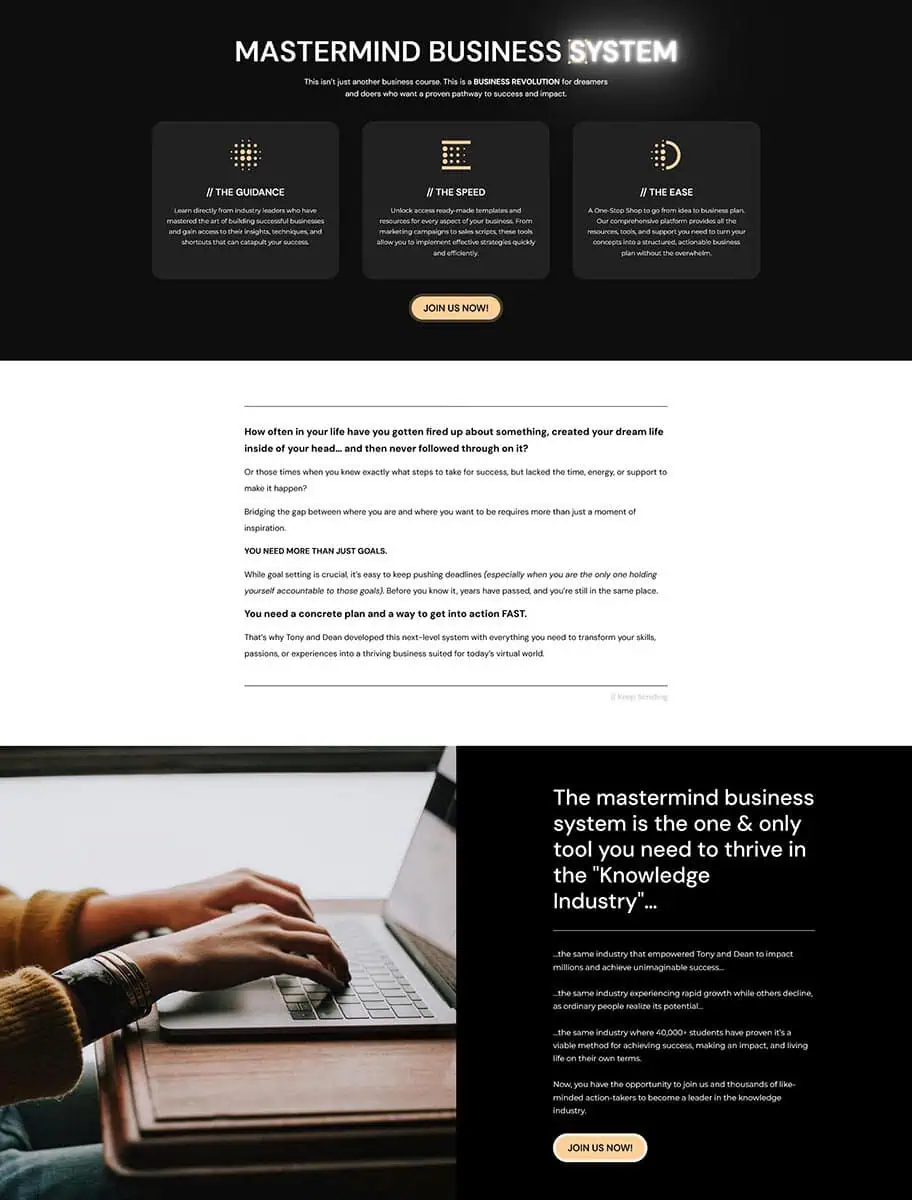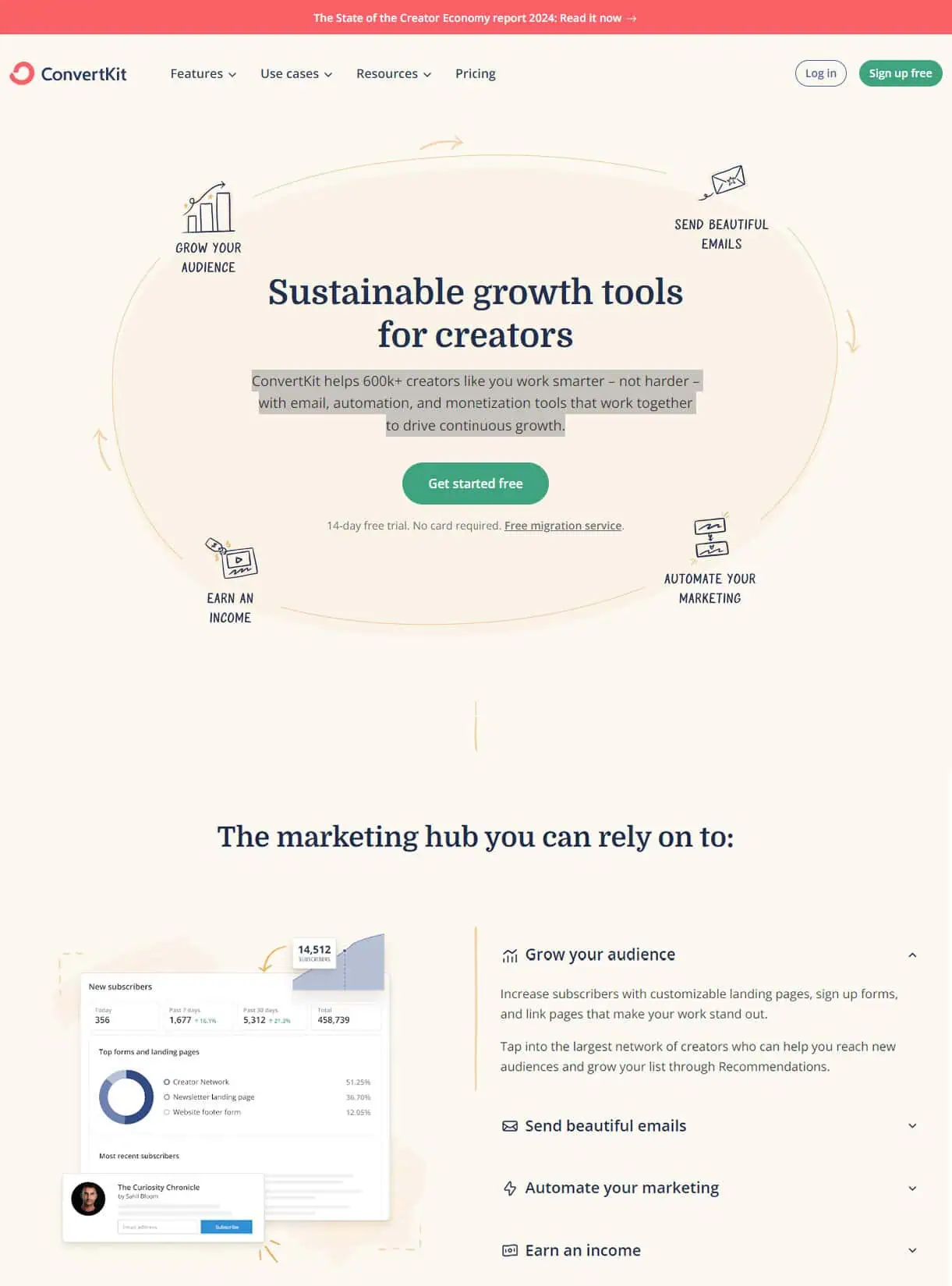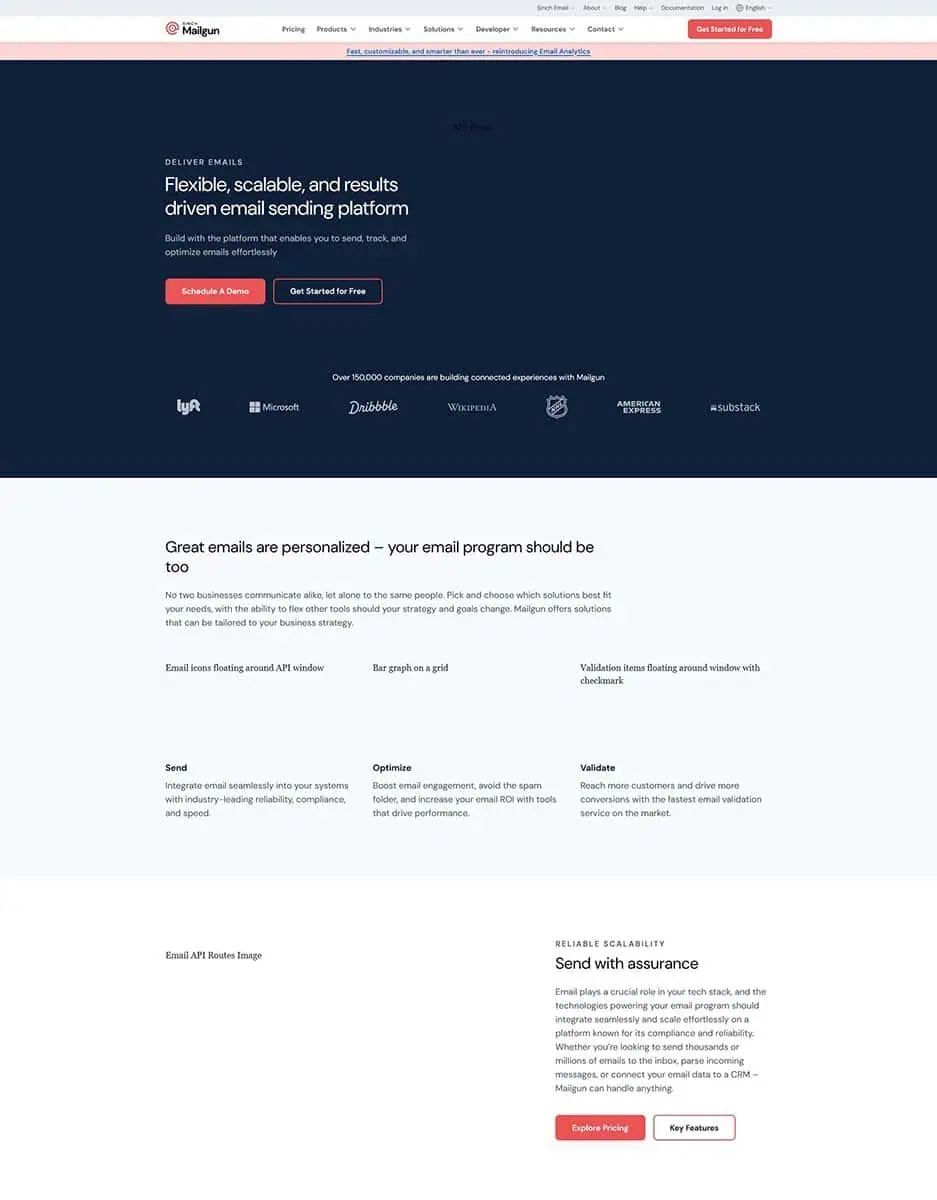High-Performance Email
High-performance email practitioners build a healthy email system with SMTP & email authentication (SPF & DKIM) for transactional & marketing emails. They align sending domains 'From' header & provide unsubscribe links. They comply with rules on email authenticity.
Get the quizEmail Marketing
High-performance email marketing can be deployed by new entrepreneurs to build nurturing relationships with website visitors, subscribers & customers. If you’re looking for a digital strategy that’s most likely to warm your audience, consider email marketing. Learn why email is the best digital strategy for entrepreneurs.
SBM-3.1 Email Lead-Magnet
A valuable lead-magnet document that solves a consumer problem is created & configured to an automated email marketing system, e.g. checklist quiz, info. guide, or eBook. An effective problem solution is offered with an unbelievable offer in exchange for the visitor's email address.*
SBM-3.2 Email Newsletter
An email newsletter is a regular email broadcast sent to subscribers who opted in to learn about a particular business type or topic. The goal is to grow your subscriber list by providing valuable information and promotional offers. You benefit from a direct line of communication with an audience you own. *
Transactional Email
Examples are WP system notices, admin notices, & user confirmations when people submit forms or sign-up for newsletters. Best practice is to use as email authentication system like Postmark or Mailgun which overrides wp_mail & facilitates authentication processes to improve deliverability.
Marketing Email
Understanding marketing emails are different to transactional emails is a key aspect. Best practice ensures your email marketing system is sent through a different server to your transactional emails, to maintain a good sender reputation with ISPs.
Data Management
Ensuring your marketing CRM system, provides segementation, tagging, and oversight of your contact data's activity (leads, subscribers, & customers), so you can improve their experience with tailored commmunications.
*Terms, conditions, limits, & subscriptions apply, subject to change.




Frequently Asked Questions
Learn more about SBMarketer's email newsletters and lead-magnets. Whatever you do, please don’t launch your email marketing system until you read the HPE Checklist Quiz!
Get the quizWhat is a Lead-Magnet?
An email marketing system integration for a high-performance website to get your first lead-magnet launched & generating leads from your website.
A valuable lead-magnet document that solves a consumer problem is created & configured to an automated email marketing system, e.g. checklist quiz, info. guide, or eBook.
Mastermind Business System (& MB Hub) is the suggested platform to provide the automation workflow and delivery of the lead-magnet by email and web link.
An account & lead-magnet infrastructure is set-up on MBS, including an opt-in system, 2 landing pages for A/B-testing, the form trigger & delivery email.
A dedicated sending sub-domain is created & verified through MBS, LeadConnector & Mailgun (e.g. smtp.sbmarketer.com) & configured with your DNS provider to enhance the delivery process.
Instructions for accessing MBS Hub is provided, along with instructions for uploading a lead-magnet and accessing the email workflow area.
*T&Cs, limits, plugins, & subscriptions apply, subject to change.
What is an Email Newsletter?
An email newsletter is a purpose-driven opportunity to directly assist your visitors, subscribers & customers, while cultivating engagement & brand authority.
With average Open Rates for all industries of 21.3% & click through rates of 2.6%, use this benchmark to work on, but note some newsletters can reach 50% OR & 3.5% CTR (J Welsh).
Mastermind Business System (& MB Hub) is the suggested platform to provide email broadcasting and delivery of the newsletter by email and web link.
An account & email template is set-up, including modular sections to set the tone for future campaigns. We collaborate on the copywriting so your first newsletter has popular topics & leader’s insight.
Choose to send to your entire email list or segment to groups using tags, e.g. send to lead-magnet subscribers or newsletter subscribers.
A dedicated sending sub-domain is created & verified through MBS, LeadConnector & Mailgun (e.g. smtp.sbmarketer.com) & configured with your DNS provider to enhance the delivery process.
Instructions for accessing MBS Hub is provided, along with instructions for creating email drafts and accessing the email broadcast area.
*T&Cs, limits, plugins, & subscriptions apply, subject to change.
What is Email Authentication?
Email authentication is a security process that starts at the DNS & protects a domain from unauthorised fraudulent use, e.g. using your identity for email spoofing.
It involves SPF (Sender Policy Framework), DKIM (DomainKeys Identified Mail), & DMARC (Domain-based Message Authentication, Reporting, & Conformance) to ensure delivery.
SPF verifies the email sending server is authorised to send emails on behalf of your domain. It allows the domain owner to specify which mail servers (IP addresses) are authorised.
DKIM works by allowing the sender to sign their emails with a unique digital signature (private key), which ensures the email content is yours & it has not been tampered with.
DMARC monitoring checks if your email passes SPF validation, if your DKIM signatures are in place, & if the email’s “From” field aligns with an authenticated domain name.
Publishing a DMARC policy in your DNS records that specifies how to handle emails that fail authentication, e.g. reject, quarantine, allow, is good practice.
What is Email Validation?
Email validation is a process to enhance email deliverability, by removing invalid email addresses from your contact list of leads and subscribers.
If your list has grown quickly, or you have purchased, or inherited an email list, then you need to validate the emails before using it or you risk damaging your sender reputation.
It’s important for business optimisation & performance, as validation can enhance your open rates & conversion rates, & improve your sender reputation with the ISPs.
When emails bounce, it negatively affects your IP Address & domain reputation, especially if more than 1-2% of your emails are soft or hard bouncing.
For example in “Business & Finance” the soft bounce benchmark is 0.63% & hard bounce benchmark is 0.46% (MailChimp).
If you’re exceeding the benchmark for your industry, you need to investigate the cause, validate your list, remove inactive subscribers, & contact the ISPs who are blocking emails.
What is Transactional Email?
Transactional emails are notifications sent to website visitors once they have taken an action, like a purchase confirmation, or a paid subscription invoice, or a password reset.
Transactional emails are usually critical for fast delivery, as they’re confirming important transactions such as, orders, subscriptions, logins, or password changes.
One key difference between transactional emails & marketing emails is that additional opt-in permission is not required for trans. email, as permission was given by the initial action.
Try providers like Postmark (free <100 emails/mth), Mailgun (3mths free <5000 emails/mth), SendLayer (free first 200 emails, $5/mth) or SendGrid (free <100 emails/day).
It’s best practice to keep transactional & marketing email providers seperate, so any deliverability issues with one provider, does not impact the other.
What is Marketing Email?
Marketing emails can be anything from newsletters, to Welcome Series emails sent over month, to automated lead-magnet follow-ups, & Reactivation Series emails.
They can be from bulk sending using an email marketing system like MBS or ConvertKit to send emails to subscribers & leads, or manually sent to different segments.
The main difference between marketing emails & transactional emails, is that opt-in permission is required from the recipient for marketing emails to legally be sent.
Sending high quality emails on a regular basis (weekly) is good practice, along with creating email funnels for nurturing leads, onboarding new customers, & reactivating recipients.
Compliance to spam regulations in different Countries & States is important, along with awareness of data security requirements for GDPR environments.


